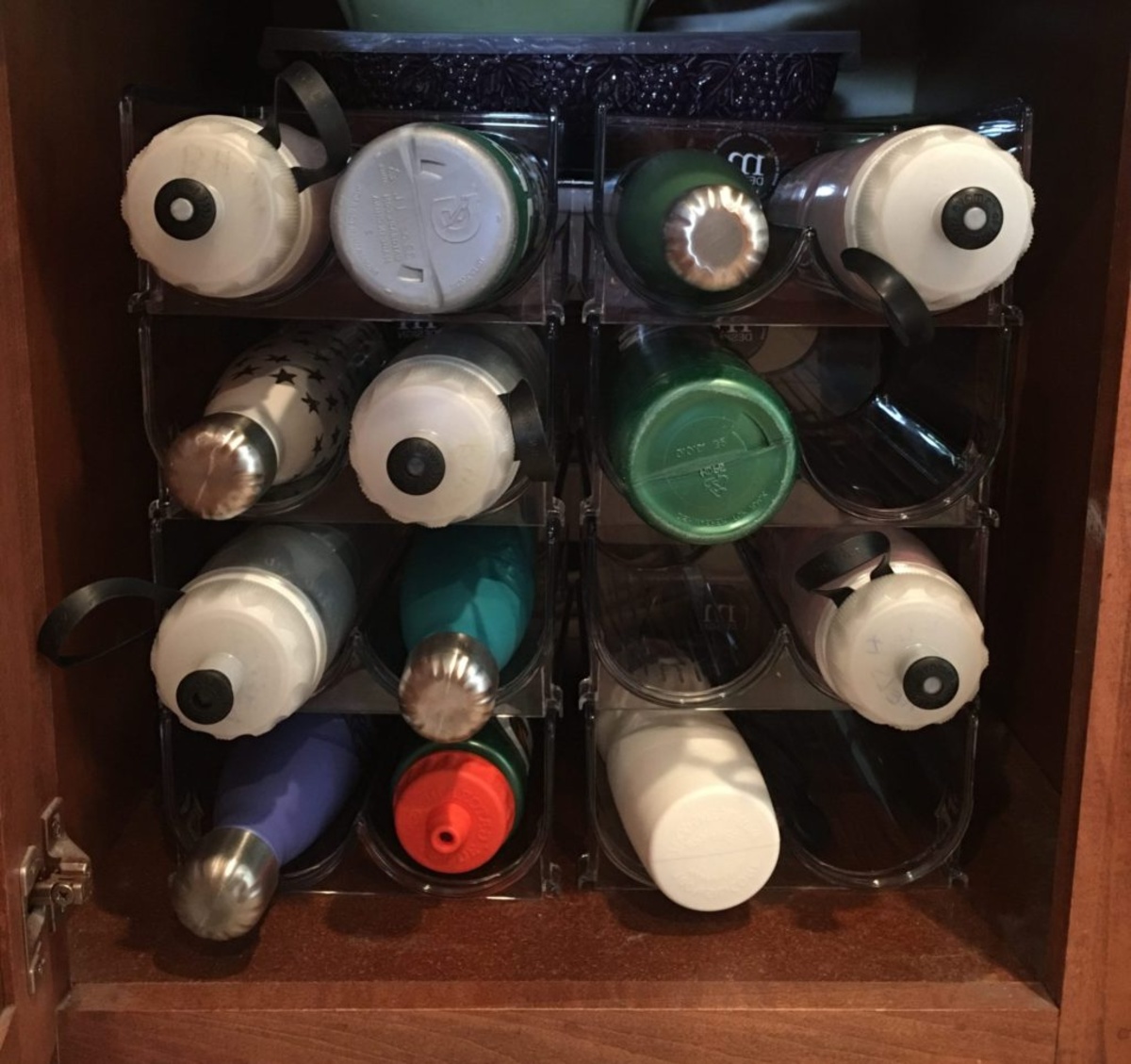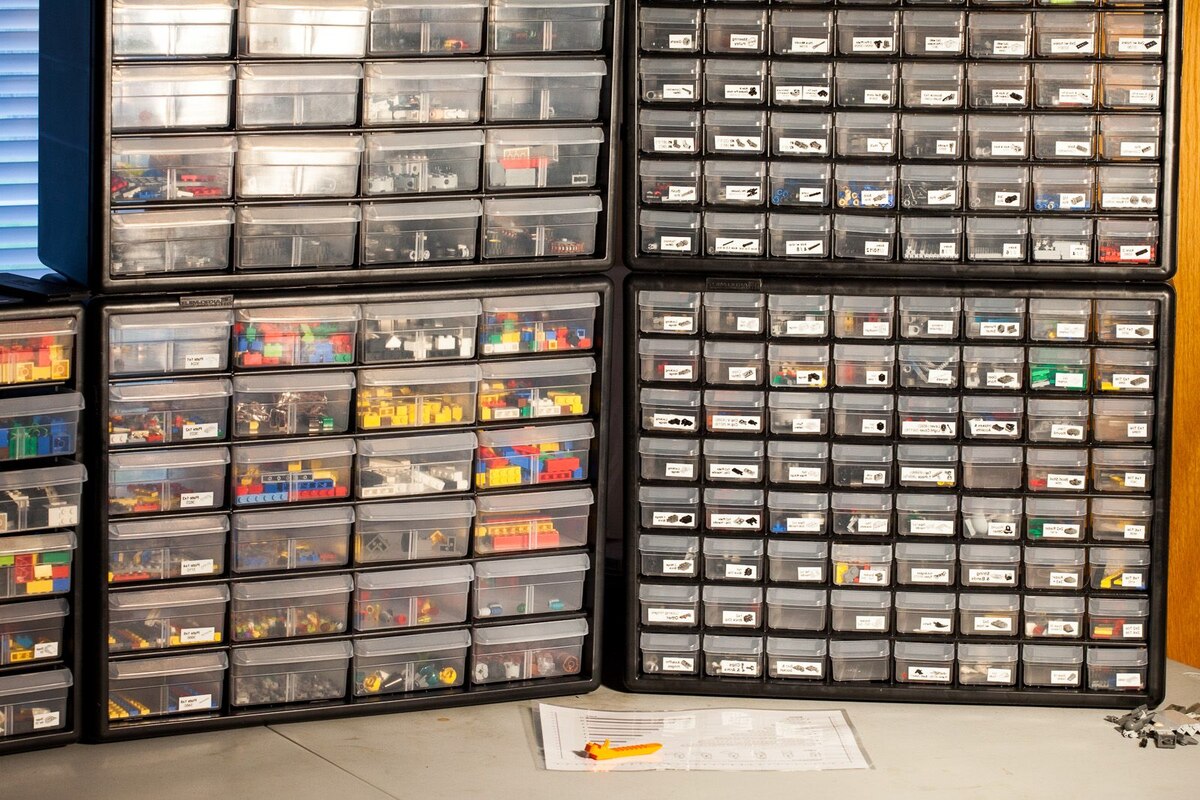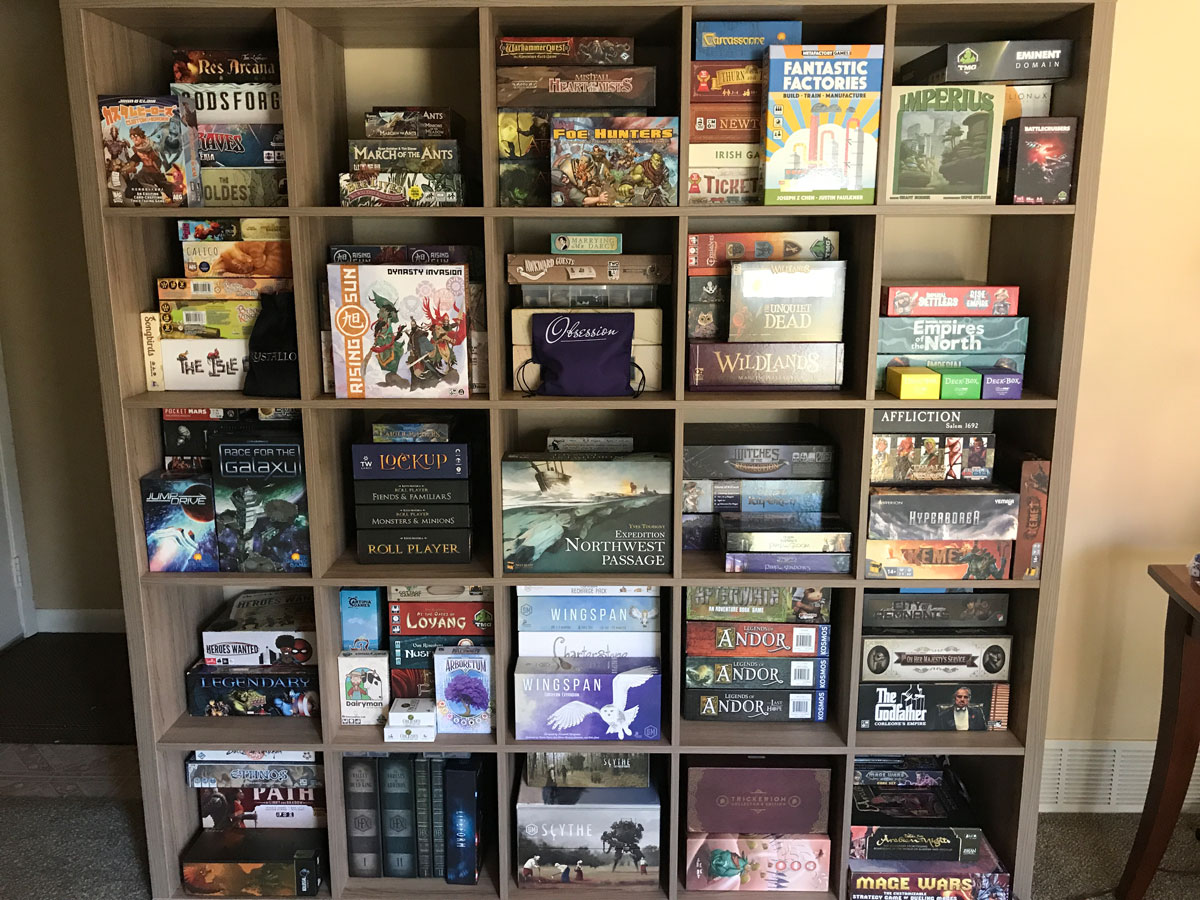Home>Renovation & DIY>Home Renovation Guides>How To Organize A Journal


Home Renovation Guides
How To Organize A Journal
Published: March 2, 2024
Discover expert tips and tricks for organizing your journal effectively at home. Get the best home renovation guides to create the perfect space for your journaling needs.
(Many of the links in this article redirect to a specific reviewed product. Your purchase of these products through affiliate links helps to generate commission for Storables.com, at no extra cost. Learn more)
Benefits of Journaling
Journaling offers a plethora of benefits that can positively impact your mental, emotional, and even physical well-being. Here are some of the key advantages of incorporating journaling into your daily routine:
-
Emotional Release: Writing in a journal provides a safe space to express your thoughts and emotions. It can serve as a form of catharsis, allowing you to release pent-up feelings and gain clarity on complex emotions.
-
Stress Reduction: The act of journaling can be incredibly therapeutic, helping to reduce stress and anxiety. By putting your thoughts on paper, you can alleviate the burden of carrying them in your mind.
-
Enhanced Self-Awareness: Regular journaling encourages self-reflection, leading to a deeper understanding of your own thoughts, behaviors, and patterns. This heightened self-awareness can be instrumental in personal growth and development.
-
Improved Problem-Solving: Writing about challenges or dilemmas in your journal can aid in problem-solving. It allows you to explore different perspectives and potential solutions, leading to greater clarity and insight.
-
Boosted Creativity: Journaling can stimulate creativity and innovation. Engaging in free-form writing, doodling, or brainstorming in your journal can help unlock new ideas and perspectives.
-
Goal Setting and Achievement: Keeping a journal can help you track your goals, aspirations, and progress. It serves as a tangible record of your journey, motivating you to stay focused and accountable.
-
Memory Enhancement: Documenting your experiences and thoughts in a journal can improve memory retention. Looking back on past entries can evoke vivid recollections and provide valuable insights.
-
Emotional Regulation: Journaling can assist in regulating emotions and managing mood fluctuations. It offers a constructive outlet for processing intense feelings and promoting emotional balance.
-
Improved Communication Skills: Regular writing in a journal can enhance your communication skills. It allows you to articulate your thoughts more effectively, which can translate to improved verbal communication.
-
Personal Growth and Development: Ultimately, journaling fosters personal growth and development. It encourages introspection, mindfulness, and a deeper connection with oneself.
Incorporating journaling into your daily routine can yield a myriad of benefits, contributing to overall well-being and personal enrichment. Whether you prefer traditional pen-and-paper journaling or digital platforms, the act of chronicling your thoughts and experiences can be a transformative practice.
Key Takeaways:
- Journaling offers emotional release, stress reduction, and enhanced self-awareness. It can boost creativity, memory, and communication skills, leading to personal growth and development.
- Choosing the right journal is crucial. Consider purpose, size, binding, paper quality, aesthetic appeal, customization options, sustainability, and digital vs. analog options.
Read more: How To Organize A Bullet Journal
Choosing the Right Journal
When it comes to journaling, selecting the right journal is a crucial first step. The ideal journal is one that resonates with your personal preferences, style, and intended use. Here are some key considerations to keep in mind when choosing the perfect journal for your needs:
-
Purpose and Intended Use: Before purchasing a journal, consider the primary purpose for which you'll be using it. Are you planning to use it for daily reflections, goal tracking, creative writing, or a specific project? Understanding the intended use will guide you in selecting a journal that aligns with your objectives.
-
Size and Portability: Think about whether you prefer a compact, portable journal that can easily fit in a bag or pocket, or if you lean towards a larger, more spacious format. The size of the journal can impact its convenience and practicality for daily use.
-
Binding and Cover: Journals come in various binding styles, such as spiral-bound, stitched, or hardcover. Consider the durability and aesthetic appeal of the binding. Additionally, the cover material and design play a role in personalizing your journaling experience.
-
Paper Quality: The paper quality of a journal can significantly influence the writing experience. Smooth, thick paper is often favored for its resistance to ink bleed-through and its tactile appeal. Consider whether you prefer lined, blank, or dotted pages based on your writing style and preferences.
-
Aesthetic Appeal: Choose a journal that resonates with your aesthetic sensibilities. Whether you prefer minimalist, artistic, vintage, or modern designs, selecting a journal that visually inspires you can enhance your motivation to engage with it regularly.
-
Customization Options: Some journals offer customization features, such as refillable pages, interchangeable covers, or additional accessories. Assess whether these options align with your desire for flexibility and personalization.
-
Sustainability and Eco-Friendly Options: For environmentally conscious individuals, there are journals made from recycled materials or sustainably sourced paper. Opting for eco-friendly journaling options can align with your values and contribute to environmental conservation.
-
Digital vs. Analog: In the digital age, the choice between a physical journal and a digital platform is a pertinent consideration. Evaluate whether you prefer the tactile experience of writing by hand or the convenience of digital journaling apps and platforms.
By carefully considering these factors, you can select a journal that complements your lifestyle, preferences, and creative expression. The right journal can serve as a cherished companion in your journey of self-discovery and personal growth.
Setting Up Your Journal
Setting up your journal is an essential process that lays the foundation for a fulfilling and effective journaling experience. Here's a detailed guide on how to set up your journal for optimal organization and productivity:
-
Personalize the Cover: Add a personal touch to your journal by customizing the cover. Whether it's adding your name, a meaningful quote, or decorative elements, personalization can make your journal feel uniquely yours.
-
Create an Index or Table of Contents: Reserve the first few pages of your journal for an index or table of contents. This allows you to categorize and locate entries efficiently, especially if your journal spans a long duration.
-
Designate Sections or Categories: Consider dividing your journal into sections or categories based on your specific needs. For example, you might have sections for daily reflections, goal tracking, creative writing, gratitude lists, or project planning.
-
Utilize Page Markers or Tabs: Incorporate page markers or tabs to easily navigate between different sections of your journal. This visual organization can streamline the process of finding and referencing specific content.
-
Set Up a Key or Legend: If you plan to use symbols, colors, or specific notations in your journal, create a key or legend to explain their meanings. This can enhance clarity and consistency in your journal entries.
-
Establish a Color-Coding System: Consider implementing a color-coding system for different types of entries or emotions. Assigning specific colors to themes such as emotions, goals, events, or moods can add visual interest and facilitate quick identification.
-
Incorporate Inspirational Quotes or Images: Infuse your journal with inspiration by including meaningful quotes, images, or illustrations throughout its pages. These elements can serve as creative prompts and uplifting reminders.
-
Experiment with Different Writing Instruments: Explore the use of various writing instruments such as pens, markers, or pencils to add diversity and creativity to your entries. Different tools can evoke different moods and enhance the overall aesthetic of your journal.
-
Create a Habit Tracker: If you're interested in tracking habits or behaviors, consider dedicating a section of your journal to a habit tracker. This can help you monitor progress and maintain accountability for your goals.
-
Leave Room for Flexibility and Growth: While setting up your journal, allow room for flexibility and growth. Your journaling needs and preferences may evolve over time, so maintaining adaptability in your journal's structure is valuable.
By implementing these strategies, you can effectively set up your journal to align with your organizational preferences and creative inclinations. A well-structured journal not only enhances the overall journaling experience but also encourages consistent engagement and self-expression.
Establishing a Routine
Establishing a consistent journaling routine is pivotal in cultivating a sustainable and rewarding journaling practice. Here's a comprehensive guide on how to establish a journaling routine that aligns with your lifestyle and promotes regular engagement:
-
Designate a Specific Time: Choose a specific time of day that best suits your schedule and energy levels for journaling. Whether it's in the morning to set intentions for the day, during a quiet evening, or any other opportune moment, consistency in timing can help integrate journaling into your routine.
-
Create a Ritual: Incorporate a ritual or pre-journaling routine to signal the beginning of your journaling session. This could involve making a cup of tea, engaging in a brief mindfulness practice, or simply finding a comfortable and conducive environment for writing.
-
Select a Frequency: Determine how often you intend to journal, whether it's daily, a few times a week, or on specific occasions. Clarifying the frequency of journaling can provide a clear framework for your routine.
-
Set Realistic Expectations: Be mindful of setting realistic expectations for your journaling routine. Avoid pressuring yourself to write lengthy entries if time constraints are a concern. Even a few minutes of journaling can be valuable.
-
Eliminate Distractions: Create a distraction-free environment during your designated journaling time. Minimize interruptions and external stimuli to foster a focused and immersive journaling experience.
-
Utilize Reminders: If needed, set reminders or alarms to prompt your journaling sessions. Integrating journaling prompts into your daily routine can help reinforce the habit.
-
Experiment with Prompts: Incorporate journaling prompts to inspire your writing and guide your reflections. Prompts can serve as creative springboards and alleviate the pressure of starting with a blank page.
-
Embrace Flexibility: While consistency is key, embrace flexibility in your routine to accommodate unexpected schedule changes or fluctuations in energy. Allow yourself the freedom to adjust your journaling routine as needed.
-
Reflect on Progress: Periodically reflect on your journaling routine and its impact on your well-being. Assess whether adjustments are necessary and celebrate the milestones of your journaling journey.
By implementing these strategies, you can establish a sustainable and enriching journaling routine that seamlessly integrates into your daily life. Consistency and intentionality in your journaling practice can lead to profound insights, self-discovery, and personal growth.
Use tabs or dividers to separate different sections in your journal, such as daily entries, to-do lists, and notes. This will help you easily find and navigate through your journal.
Using Prompts and Templates
Incorporating prompts and templates into your journaling practice can ignite creativity, deepen self-reflection, and provide structure to your entries. Here's a comprehensive exploration of how to effectively utilize prompts and templates in your journal:
-
Exploring Prompts: Begin by exploring a diverse range of journaling prompts. These prompts can be thematic, introspective, or geared towards specific goals. Consider prompts related to gratitude, personal growth, overcoming challenges, or envisioning the future. Online resources, books, and journaling communities are valuable sources for discovering prompts that resonate with you.
-
Customizing Prompts: Tailor prompts to align with your unique experiences and aspirations. Personalize generic prompts by adding specific details or modifying them to suit your current circumstances. Customizing prompts can infuse your journaling practice with authenticity and relevance.
-
Prompt Jar or Wheel: Create a prompt jar or wheel filled with various prompts. When you're unsure of what to write about, randomly select a prompt from the jar or spin the wheel. This spontaneous approach can infuse an element of surprise and novelty into your journaling sessions.
-
Themed Templates: Explore themed journaling templates that cater to specific areas of self-exploration. Templates for gratitude journaling, goal setting, mood tracking, or creative writing can provide a structured framework for your entries. These templates can streamline the journaling process and offer guidance when inspiration is elusive.
-
Visual Prompts: Incorporate visual prompts such as photographs, art prints, or magazine clippings into your journal. Visual stimuli can evoke emotions, memories, and imaginative responses, serving as powerful prompts for introspective writing and creative expression.
-
Reflective Prompts: Integrate reflective prompts that encourage deep introspection and self-analysis. These prompts may prompt you to explore your values, fears, aspirations, or significant life events. Reflective prompts can foster profound insights and emotional processing.
-
Seasonal and Event-Based Prompts: Embrace seasonal or event-based prompts that align with holidays, milestones, or transitions. For example, New Year's reflections, birthday prompts, or prompts related to specific seasons can add a temporal dimension to your journaling practice.
-
Prompt Libraries: Explore online prompt libraries or databases that offer a vast collection of prompts categorized by themes, emotions, and intentions. These resources can serve as an endless reservoir of inspiration for your journaling endeavors.
By integrating prompts and templates into your journaling routine, you can infuse variety, depth, and structure into your entries. Whether you seek introspection, creative expression, or personal growth, prompts and templates can serve as invaluable catalysts for meaningful and engaging journaling experiences.
Read more: How To Store Journals
Staying Consistent
Maintaining consistency in your journaling practice is fundamental to reaping the full benefits of this reflective habit. Here's a comprehensive exploration of strategies to stay consistent in your journaling routine:
-
Set Realistic Expectations: Establish achievable goals for your journaling frequency. Whether it's committing to daily entries, a few times a week, or even once a week, align your expectations with your schedule and lifestyle. Consistency is about regularity, not rigidity.
-
Integrate Journaling into Daily Rituals: Embed journaling into existing daily rituals or activities. Whether it's journaling during your morning coffee, before bedtime, or during a lunch break, associating journaling with established routines can facilitate consistent engagement.
-
Accountability Partners or Groups: Consider partnering with a friend or joining a journaling group to foster mutual accountability. Sharing your journaling goals and progress with others can provide encouragement and motivation to stay consistent.
-
Create Visual Reminders: Place your journal in a visible and accessible location as a visual cue to prompt your journaling sessions. Seeing your journal regularly can serve as a gentle nudge to engage with it consistently.
-
Reflect on the Benefits: Remind yourself of the positive impact of journaling on your well-being. Reflect on the emotional release, clarity, and personal growth that journaling facilitates. This reflection can reinforce your commitment to consistent journaling.
-
Embrace Imperfection: Allow room for imperfect journaling sessions. Not every entry needs to be profound or lengthy. Embracing imperfection can alleviate the pressure of perfectionism and encourage consistent participation.
-
Celebrate Milestones: Acknowledge and celebrate milestones in your journaling journey. Whether it's reaching a specific number of entries, completing a journal, or achieving a journaling goal, celebrating these milestones can reinforce your commitment to consistency.
-
Adapt to Changes: Be adaptable in your approach to journaling. Life's demands and circumstances may fluctuate, and it's essential to adapt your journaling routine accordingly. Flexibility can prevent discouragement during challenging times.
-
Reflect on Progress Regularly: Periodically reflect on your journaling routine and its impact on your well-being. Assess whether adjustments are necessary and celebrate the milestones of your journaling journey.
By implementing these strategies, you can establish a sustainable and enriching journaling routine that seamlessly integrates into your daily life. Consistency and intentionality in your journaling practice can lead to profound insights, self-discovery, and personal growth.
Reviewing and Reflecting
Reviewing and reflecting on your journal entries is a pivotal aspect of the journaling process, as it allows you to gain insights, track personal growth, and derive meaning from your experiences. Here's a comprehensive exploration of the significance of reviewing and reflecting on your journal entries and how to effectively incorporate this practice into your journaling routine:
-
Gain Perspective: When you review past entries, you gain a broader perspective on your thoughts, emotions, and experiences. It enables you to observe patterns, shifts in mindset, and recurring themes, providing valuable insights into your inner world.
-
Track Progress: Reflecting on earlier entries allows you to track your personal growth and development. You can observe how your perspectives, goals, and challenges have evolved over time, fostering a sense of achievement and self-awareness.
-
Identify Patterns and Triggers: Reviewing your journal can help you identify patterns in your emotions, behaviors, and responses to various situations. It enables you to recognize triggers, recurring obstacles, and areas for potential growth and change.
-
Celebrate Achievements: Reflecting on past entries provides an opportunity to celebrate achievements, milestones, and moments of gratitude. It allows you to acknowledge your progress and resilience, fostering a positive and empowered mindset.
-
Gain Closure and Resolution: Revisiting past experiences and emotions through journal entries can facilitate closure and resolution. It allows you to process unresolved feelings, gain clarity, and derive lessons from challenging circumstances.
-
Promote Self-Compassion: Reflecting on your journal entries with self-compassion and empathy can be a transformative practice. It encourages understanding, forgiveness, and self-acceptance, nurturing a nurturing and supportive relationship with yourself.
-
Incorporate Reflection Sessions: Dedicate specific times for reflection sessions where you review a series of past entries. This intentional practice allows you to delve deeper into your thoughts and experiences, fostering self-discovery and emotional processing.
-
Identify Growth Opportunities: Use reflection as a tool to identify areas for personal growth and improvement. By recognizing recurring challenges or limiting beliefs, you can proactively work towards positive change and self-development.
-
Extract Lessons and Insights: When reviewing your journal, extract valuable lessons, insights, and wisdom from your experiences. Look for recurring themes, moments of clarity, and transformative realizations that can inform your future actions and decisions.
-
Express Gratitude: Take moments during reflection to express gratitude for the positive experiences, supportive relationships, and personal achievements documented in your journal. Gratitude amplifies positive emotions and fosters a mindset of abundance and appreciation.
By integrating regular review and reflection sessions into your journaling routine, you can harness the transformative power of introspection, self-awareness, and personal growth. Embracing the practice of reviewing and reflecting on your journal entries can enrich your life with profound insights and emotional resilience.
Frequently Asked Questions about How To Organize A Journal
Was this page helpful?
At Storables.com, we guarantee accurate and reliable information. Our content, validated by Expert Board Contributors, is crafted following stringent Editorial Policies. We're committed to providing you with well-researched, expert-backed insights for all your informational needs.















0 thoughts on “How To Organize A Journal”